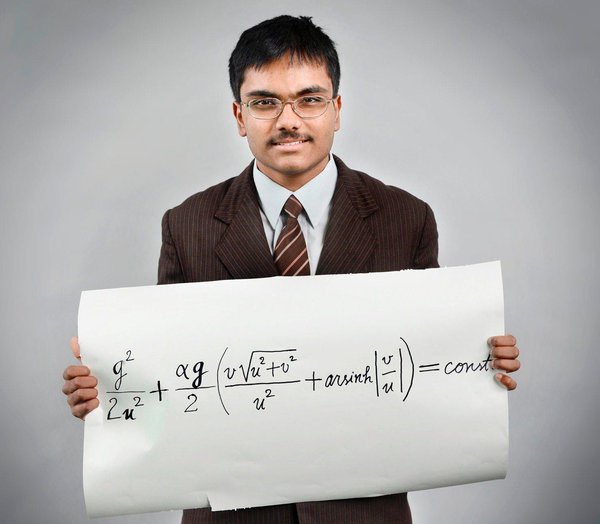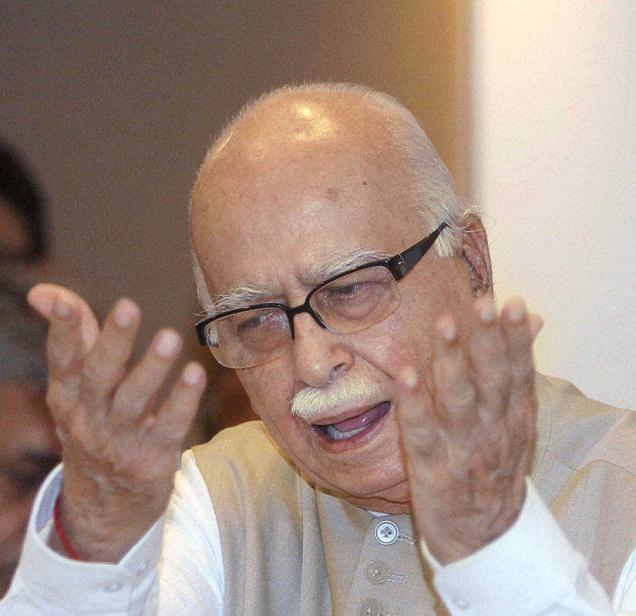May 29, 2012
A research paper that claims to fill in a gap in Isaac Newton's formulas for the physics of falling objects has drawn worldwide attention to a 16-year-old student in Germany, but physicists are reserving judgment until they've seen the proof.

May 29, 2012
A research paper that claims to fill in a gap in Isaac Newton's formulas for the physics of falling objects has drawn worldwide attention to a 16-year-old student in Germany, but physicists are reserving judgment until they've seen the proof.

Sixteen-year-old Shouryya Ray, a student from Dresden who was born in Calcutta, submitted a paper proposing analytical solutions to two problems in particle dynamics.
The focus of the buzz is Shouryya Ray, an Indian-born student who won second prize this month in the math and informatics category for Germany's Jugend Forscht student science competition. Ray tackled a couple of longstanding puzzlers for physics students: How do you account for air resistance in calculating the trajectory of ball thrown out at an angle? And precisely how does a ball thrown against the wall rebound?
The first question relates to Newton's law of universal gravitation: In his Principia Mathematica, published in 1687, Newton laid out how a gravitational field would affect a thrown object — but he didn't account for the effect of air resistance. Through the centuries, physicists have used numerical approximations to take drag into account, and when computers come into play, those approximations can be incredibly precise. But Ray said he wanted to come up with a set of formulas that could calculate the effect directly, even though his instructors said that had never been done.
"I asked myself: Why can't it work?" he told the German newspaper Die Welt.
That's what Ray tried to do in his prize-winning paper, titled "Analytical Solution of Two Fundamental Unsolved Problems of Particle Dynamics" ("Analytische Lösung von zwei ungelösten fundamentalen Partikeldynamikproblemen"). In addition to the falling-ball problem, Ray took on a puzzler of more recent vintage, having to do with the description of a particle's collision with a wall, as described by 19th-century theory. But it was the "kid-trumps-Newton" angle that really stirred up a buzz.
Die Welt's report came early in the game: The Daily Mail and The Sunday Times of London picked up the story, adding to the sensation. The idea that a teenager could figure out something that Newton didn't is irresistible — particularly when the teen is an immigrant from Calcutta who says he's no genius. But the story just sparked more questions among inquiring minds in such online hangouts as Physics Forum, Slashdot and Reddit: What exactly did Ray do? And were these problems really such mysteries to solve?
That's a challenge, because Ray's paper was a school project submitted for a contest, and thus not subject to the publication process and peer review that professional work typically goes through. For that reason, the experts are reluctant to weigh in.
"This story seems rather suspicious," Richard Fitzpatrick, a physicist at the University of Texas in Austin, told me in an email. "None of the news reports give any details of the calculation. None of the people who hailed Shouryya Ray as a genius are scientists, and none of them give the impression that they have seen the calculation in question. It is impossible to gauge the scientific merit of the calculation until it is made public."
Syracuse University physicist Simon Catterall said in an email that calculating the trajectories of falling objects hadn't been seen as a particularly grand puzzle of physics. "The background given in the article seems genuine enough, so it may indeed be true, but I haven't heard anything about a new solution to a Newtonian problem on the grapevine," he told me.
Based on what's come out about the work so far, the consensus seems to be that Ray has done amazing work for his age — and if he had to choose between his passion for science and his passion for soccer, he'd be well-advised to pick math and physics. His paper putting forth an "analytical solution to two fundamental unsolved problems" may not be the breakthrough that some of the reports have made it out to be, but that doesn't take anything away from the teenager's achievement.
"What Ray has worked out, almost certainly independently, would definitely put him in the 99th percentile amongst his peers and maybe even more," one Redditor observed.
By the way, the first-place winner in the math and informatics category, Julius Kunze, wrote a paper on relativistic ray tracing. But that's a different story…
Other experts on Newtonian physics have replied to my follow-up queries via email:
- Oxford University physicist James Binney: "Doesn't sound too interesting to me. The resistance of air to the ball won't be susceptible to simple analytic formulae — if the ball is of ordinary size, [greater than a centimeter] radius — the flow around it will be in the high Reynolds-number regime and involve a thin boundary layer. Such flows were extensively studied from the last part of the 19th century, so it's true that they lie beyond Newton's knowledge. A good approximation will be to take the drag force as pi r^2 rho v^2, where r is the radius of the ball, v its speed and rho the density of air. I'm unaware of a puzzle regarding bouncing balls. In detail the bounce will depend on the physical properties of the ball — as any squash player knows. Usually one adopts a coefficient of restitution. To be impressed we need to know details."
- University of Bristol physicist Michael Berry: "Without seeing the details of what Ray has claimed, it's impossible to comment intelligently. It depends crucially on how he has modeled the air resistance. But a falling body with air resistance (however modeled) is hardly a 'fundamental unsolved problem,' as he seems to think. There's a powerful aroma of hype."
Courtesy: msnbc



































































































